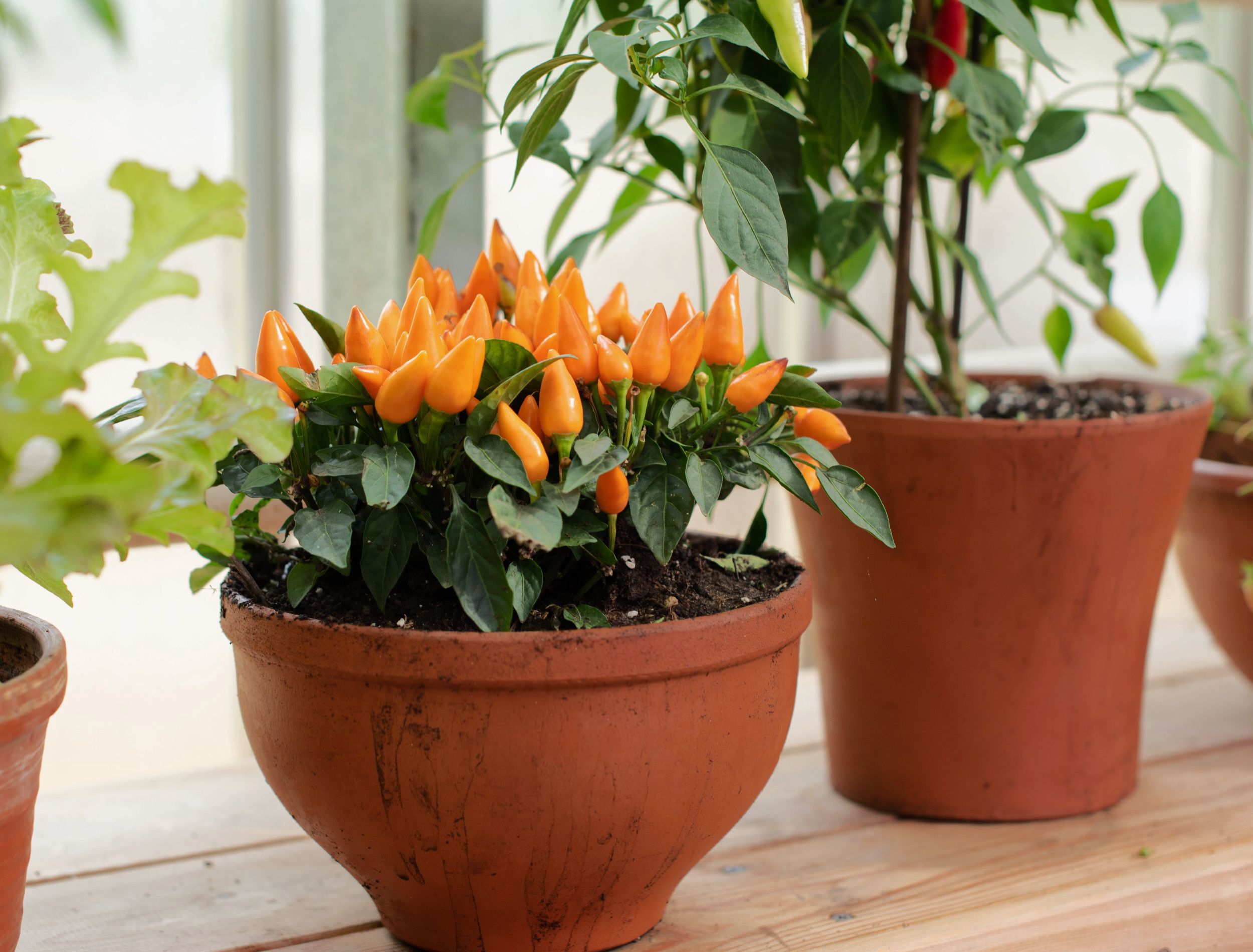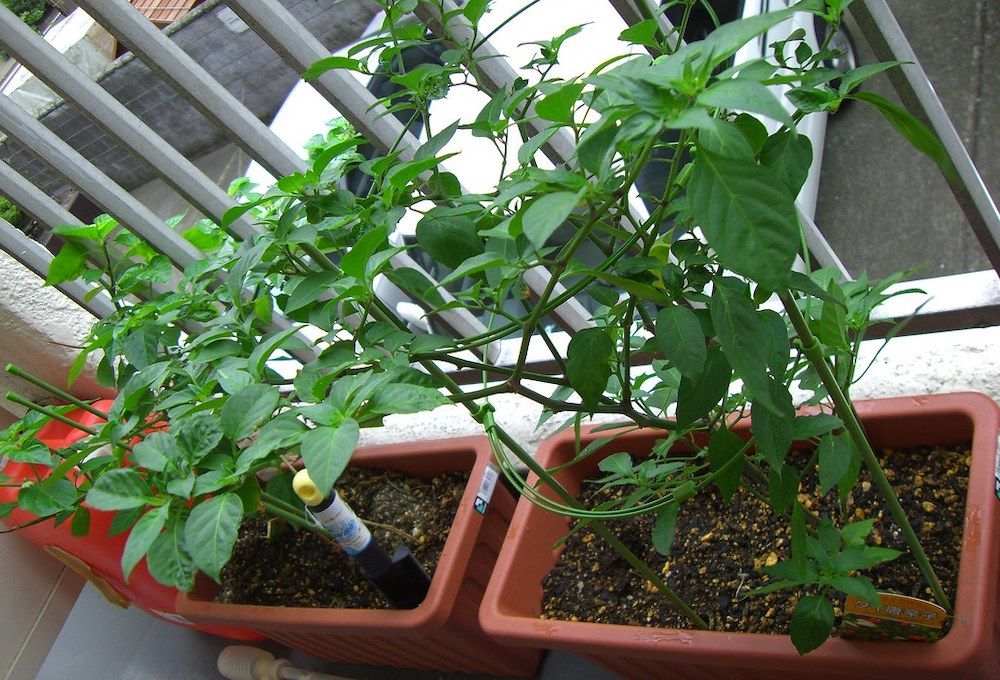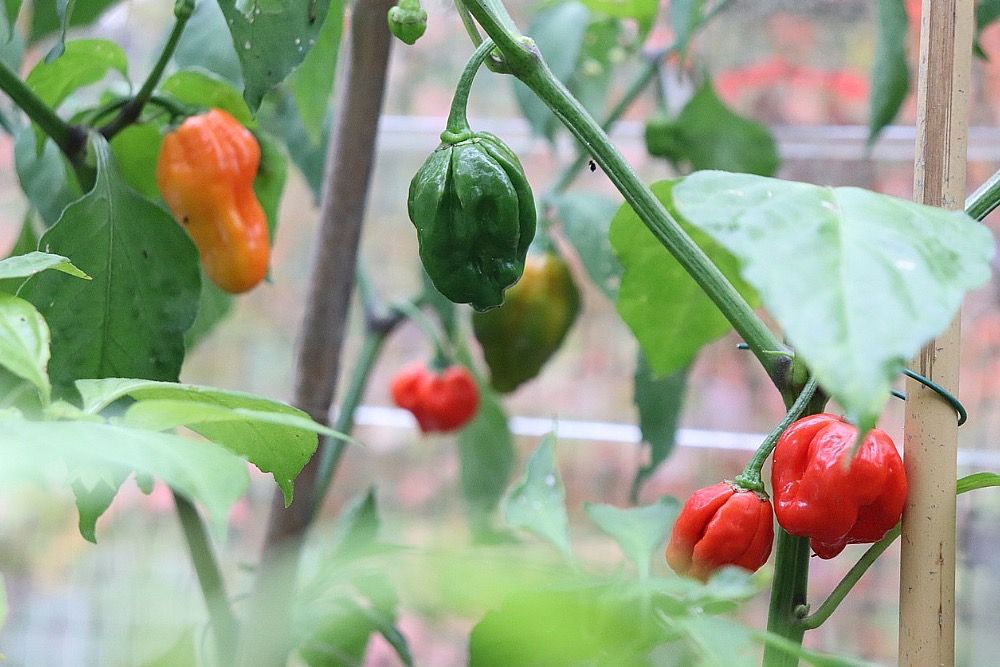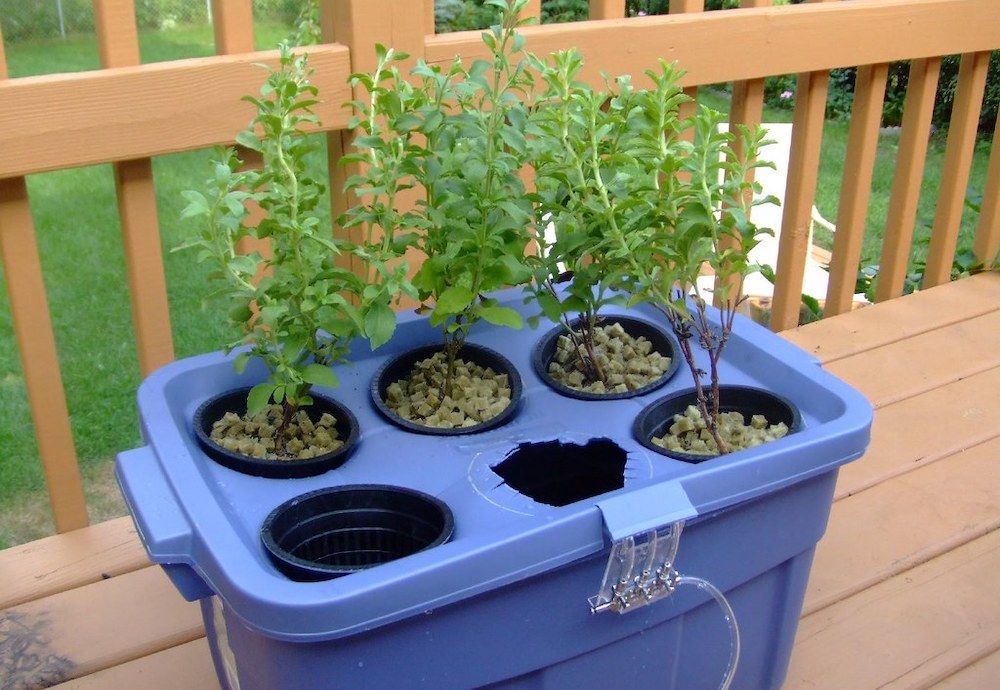Peppers are warm-season veggies, meaning they need the right temperatures to thrive. Pepper plants prefer daytime temperatures between 70 and 80 degrees and night-time temperatures around 70 degrees Fahrenheit. These temperatures vary between different pepper varieties. For example, chilies can withstand daytime temperatures up to 85 degrees Fahrenheit.
Does this mean you can’t grow peppers in the winter? No! If there’s a pepper plant you love, growing it in the winter is a great way to keep things spicy all year!
3 Ways to Grow Peppers in Winter
With some TLC, it’s possible to keep your pepper plants alive throughout the cold winter months. Measure light and give your plants the right temperature for healthy growth! Here are some ways to grow peppers in winter.
1. Grow Them Indoors in Containers
Image credits: jeremydeades via Creative Commons
If you want to continue growing peppers you have outdoors in the ground come winter, you need to bring them indoors before night-time temperatures fall below 60 degrees Fahrenheit. To transplant your pepper plant to a pot, you'll need to:
- Use a garden spade to loosen the soil around your pepper plant, so it's easier to scoop it up.
- Gently scoop out your pepper plant, but keep the rootball intact.
- When scooping it out, gather as many roots as possible and repot the plant in a container that you can move indoors.
- Don't tug or pull out the roots, as this could damage your plant.
When repotting your plant, use well-draining potting soil and do a soil test to ensure the pH is between 5.8 and 6.8. Don't use garden soil because these soils can become compacted and contain pests and weed seeds that can attack other plants indoors.
You can use store-bought potting soil or make your own organic potting soil for your peppers. Ensure the pot you use has drainage holes to prevent waterlogging and root rot. In a 5-gallon pot, put one plant at least 12 inches deep and top it off with topsoil dressing.
If you're using large containers, ensure at least 18 to 24 inches of space between each plant. You'll also need to use stakes to support large pepper plants. Place your pepper plants under grow lights when you move them indoors. Measure light to provide peppers with optimum conditions for healthy growth.
Pro Tip: Pepper plants require at least 16 hours of light per day to encourage fruit. Green peppers take about two months after transplanting to produce fruits, and other color peppers need two and a half months to start developing.
2. Grow Them in a Heated Greenhouse
Image credits: jackpenton via Pixabay
Greenhouses are a great way to grow off-season plants year-round. They come in various shapes, sizes, and materials to help you pick the right one for your requirements. As long as you avoid common greenhouse mistakes, you can grow plants inside to shield them from rain, wind, snow, weeds, pests, and high-solar radiation.
Besides regulating temperature and lighting for healthy plant growth, you'll also need to determine what soil is suitable for your greenhouse plants. When it comes to watering, drip irrigation is a great way to deliver water and nutrients to your plants.
Drip irrigation gives you control over the amount of water and nutrients your plants get. Drip irrigation uses drip lines that provide tiny drops of nutrient-rich water to the plants. A timer connected to the drip line controls how frequently your plants get fed.
This irrigation system helps save water and prevents the foliage from getting too wet, which decreases the chances of injury and rot.
If you don't have a traditional outdoor greenhouse, try combining your container pepper plants with grow tents. Grow tents are like indoor greenhouses and come in many sizes and specifications.
They have built-in grow lights and multiple vents to allow for smooth air circulation. Depending on the number of plants you're growing or the size of your pots, pick a grow tent that fits your requirements to ensure healthy plant growth.
Pro Tip: You can learn to create a mini indoor greenhouse with PVC pipes and plastic sheeting that you can place anywhere inside your home to grow your pepper plants. However, you'll need to invest in a heat source and find a way to regulate temperature and air.
3. Use Hydroponics to Grow Peppers
Image credits: J Wynia via Creative Commons
You can grow many herbs, leafy greens, and vegetables without soil -- including peppers. If you want to plant peppers hydroponically in winter, you'll need to set up a Deep Water Culture system (DWC).
Start seeds indoors, and once you have seedlings with six to eight true leaves, transfer them to the DWC system that you can DIY or purchase online. Place your DWC system in a room that receives at least six hours of direct sunlight but away from windows and heating vents to prevent drafts and burns.
If placing them indoors under direct sunlight is impossible, invest in grow lights that mimic natural light to help your pepper plants thrive.
Since peppers are warm-season veggies, ensure the reservoir's daytime temperature is between 72 and 82 degrees Fahrenheit and the nighttime temperature is between 57 and 61 degrees Fahrenheit.
The reservoir's pH levels should be between 5.8 and 6.8. With a TDS meter, keep the Electric Conductivity levels above 64 and 84 gallons per grain, or 1,100 and 1,446 parts per million.
Pepper Late Than Never!
Don’t be discouraged if, despite all your efforts, your pepper plants refuse to stay over for winter. Some pepper varieties perform better than others for some gardeners, so you’ll need to experiment with different types to see which one works for you.
Remember to test soil moisture, use the right potting soil, and a container with drainage holes to prevent waterlogging and root rot. Also, learn to measure light and temperature to give your pepper plants the ideal indoor conditions for healthy growth.
Leave your experiences, thoughts, and questions in the comment section! And share with friends and family who might find this helpful.
Happy gardening!




